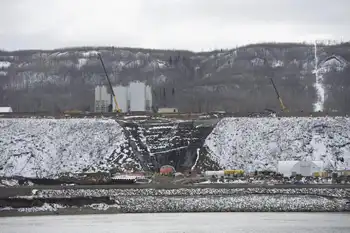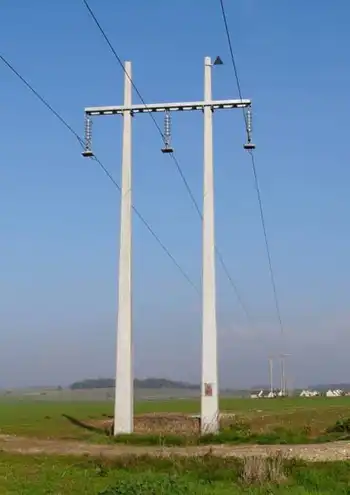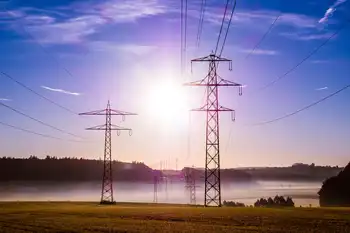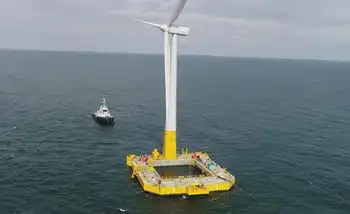Squandering energy in the East
BERLIN, GERMANY - In the days when Eastern Europe was controlled by the Soviet Union, the cities and large provincial towns throughout this part of the divided Europe had a distinctive odor.
During the long winters you could smell the sulfur and feel the grit from the brown coal emissions that hung over East Berlin, Prague, or the Polish industrial centers of Katowice and Wroclaw.
In the ministries and public buildings, heating levels were controlled by opening the windows. There were no thermostats, no appliances on radiators to check the temperature, no means of switching off the heating system. The waste took place regardless of whether the energy came from domestic coal production or from natural gas and oil imported from Russia.
"There was no need to care about energy savings or efficiency," said Peter Kaderjak, director of the energy department at Corvinus University in Budapest. "The cost of energy was highly subsidized by the Soviet Union. In Eastern Europe, energy supplies were safe, secure, guaranteed and cheap."
Nearly 17 years after the fall of the Berlin Wall, the smell is gone, but not much else has changed - or, experts say, not nearly enough. Even as countries complain about their dependence on Russia for energy, attempts to diversify their energy sources or tackle energy efficiency have been slow, if not haphazard.
The highly publicized price increases in Ukraine and Belarus notwithstanding, subsidies persist in many East European countries, keeping energy costs low and removing the short-term economic incentive to conserve.
And even as accession to the European Union has made billions available to promote energy efficiency, many countries have failed to take advantage, focusing instead on finding new sources of nonrenewable energy.
Experts say the solution lies in a combination of awareness and political will. For the 2007- 2013 period, the EU has allocated €308 billion, or $394 billion, for structural funds, which can be used for energy efficiency, renewable energy and environmental projects. Of that, more than €134 billion has been earmarked for the 10 countries that joined in 2004: Estonia, Latvia, Lithuania, Slovakia, Czech Republic, Poland, Hungary, Slovenia, Malta and Cyprus.
But from 2004 to 2006, the 10 new members received a total of €22.1 billion.
"The funding is there," said Claude Turmes, vice president of the European Greens and chairman of the energy committee in the European Parliament. "The big issue is awareness. There must be an awareness that energy intensity damages not only the climate but the overall value of economic growth."
The stakes are sizable, and so is the opportunity. The European Bank for Reconstruction and Development, or EBRD, estimates that the economies of Eastern Europe will grow 4 percent to 5 percent a year over the medium term. Josuye Tanaka, an energy specialist at the bank, said the region's dependence on energy imports, combined with historically high energy prices, could be a catalyst for increasing awareness over energy efficiency and the need to save energy.
"Driven by energy security, reducing dependency would mean more energy efficiency," Tanaka said. "There is also the competitive issue. With an increase in energy prices globally, energy efficiency becomes very important for competitiveness."
Many governments in the region started using less energy almost as soon as the Berlin Wall collapsed in November 1989. But it was by default.
Szymon Liszka, director of the independent Polish Foundation for Energy Efficiency in Katowice, said the drastic transformation from highly centralized five-year plans to market economies meant many older, energy-inefficient enterprises lost their markets in the former Soviet Union and were forced to close.
"That transformation process saved energy," Liszka said, "but it did not mean that governments had put in place a strong policy focused on environmental protection and energy efficiency."
Josef Votruba, an energy efficiency expert at the Czech Republic's Ministry of Industry and Trade, said the change began in earnest when countries applied to join the EU in the mid-1990s.
The Czech government has set ambitious targets for the next three years. It has a national program for energy management with a budget of 8 billion koruny, or $363 million, for that period.
"The focus is on saving energy, increasing renewable energy sources and higher use of alternative fuel in transport," Votruba said. An additional 2 billion koruny has been set aside for the agricultural sector for the development of biodiesel, for example, from corn.
"The goal of the energy efficiency program is to reduce energy consumption by 1 percent a year," Votruba said. "By 2010, the Czech Republic wants to have 8 percent of its electricity produced from renewable sources."
Tanaka of the European Bank for Reconstruction and Development, or EBRD, said the Czech Republic was "quite advanced" on the issue.
In the rest of the region, the situation is worse. Russia and Ukraine, for example, have six times the energy intensity than West European countries. Energy intensity measures the amount of energy required to make one unit of gross domestic production. Estonia leads the pack for energy intensity as it tries to reduce its reliance on shale oil that is obtained from soft, finely stratified rock.
Experts say there is no easy solution. The EBRD said it lay in promoting awareness by the private sector and governments. Other experts said the EU should become much more assertive in insisting that the regulations these countries agreed to adopt during the EU accession negotiations were put in place. Enforcement of EU energy directives is very weak, Kaderjak said, and governments have generally had different spending priorities.
"There has been a strong movement over the past decade to reduce the subsidies, but it is an unfinished business," he said. Hungary, for example, still has direct price subsidies for domestic users of natural gas. The prices are substantially below Western levels. "I am not sure that encourages energy saving," Kaderjak said.
"Domestic housing consumes 40 percent of energy, so there is a huge scope for energy efficiency in this sector," he added.
But even when new housing is built, Kaderjak said, there are too few regulations to force the construction industry to implement EU energy efficiency standards. When they do, as in the case of Poland, they are not implemented.
"You need inspectors to visit the sites and the enterprises," Liszka said. "Inspections are haphazard because there are so few inspectors."
Turmes, of the Greens, lamented the lack of focus on what Eastern Europe can do right away to build on the infrastructure left by the Soviets.
"The former Soviet system had two advantages," Turmes said. "Because there were so few private cars, the public transportation system was very developed. And second, the cities and towns had central district heating systems, which allowed surplus electricity to be converted into heat and fed through a piping system."
"Here we have great chances to modernize both infrastructures, not build them from scratch," Turmes said.
The EBRD is focusing on district and public transportation as part of its new energy initiative. Tanaka said the bank was working with power-producing energy companies and more than 200 municipalities in the region.
"The aim is to invest in projects that support energy efficiency in the infrastructure," he said.
And instead of waiting for governments to implement legislation to promote energy efficiency, the lender is literally going out to the enterprises.
"We are trying to target as many companies as possible," Tanaka said. "For example, in the case of the large energy users in steel and nonferrous metals industries in Russia and Ukraine, we go into these factories. We look at the possibility for energy efficiency gains and compute the financial payback."
Under the lender's new Sustainable Energy Initiative, it will invest €1.5 billion in energy efficiency, renewables and clean energy projects over the next three years.
Despite that, all the energy experts said Eastern Europe would have to take much bolder steps once the political will was there. This is especially important as economic growth, and the good times that come with it, threaten to obscure longer-term concerns.
"We have to make sure that carbon reductions will continue," Tanaka said, "and that economic growth will not bring us back 15 years when the transformation first started."
Related News

New Orleans Levees Withstood Hurricane Ida as Electricity Failed
NEW ORLEANS - Infrastructure in the city of New Orleans turned in a mixed performance against the fury of Hurricane Ida, with the levees and pumps warding off catastrophic flooding even as the electrical grid failed spectacularly.
Ida’s high winds, measuring 150 miles (240 kilometers) an hour at landfall, took out all eight transmissions lines that deliver power into New Orleans, ripped power poles in half and crumpled at least one steel transmission tower into a twisted metal heap, knocking out electricity to all of the city. A total of more than 1.2 million homes and businesses in Louisiana and Mississippi…




